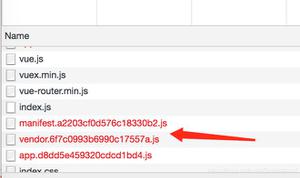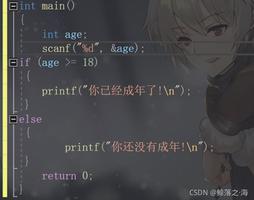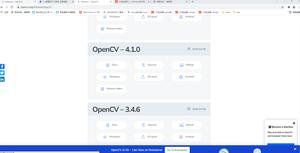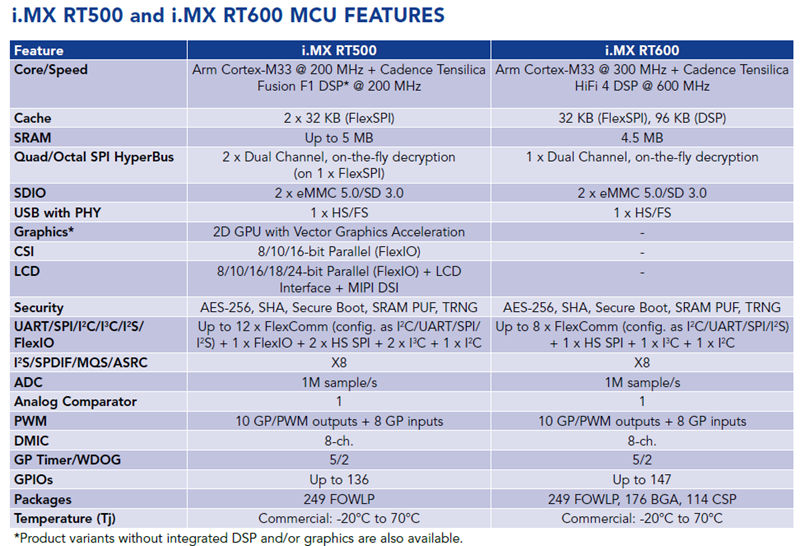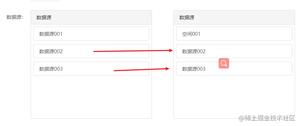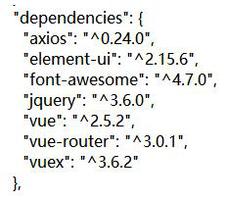vue 快速入门 系列 —— vue 的基础应用(上)

其他章节请看:
vue 快速入门 系列
vue 的基础应用(上)
Tip: vue 的基础应用分上下两篇,上篇是基础,下篇是应用。
在初步认识 vue一文中,我们已经写了一个 vue 的 hello-world。对 vue 已经有了一个大概的印象。
接下来我们应该掌握 vue 的最基础知识,学会 vue 的基本应用。
比较好的方法就是花个几天的时间将 vue 官网的基础篇尽量走一遍,写一写例子。以下是 vue 2.x 的基础篇的目录:
- 教程 2.x - 基础
- 安装
- 介绍
- Vue 实例
- 模板语法
- 计算属性和侦听器
- Class 与 Style 绑定
- 条件渲染
- 列表渲染
- 事件处理
- 表单输入绑定
- 组件基础
注:如果你像笔者一样,只有 jQuery 开发的经验,在看基础篇的过程种,肯定会有很多的不懂之处,先看下去,把能看懂的先看完。
本文记录的是笔者当初看 vue 基础篇遇到的一些重要的、不好理解的知识点,算是基础篇的一个补充或笔记。
Vue 实例
通过 new Vue() 来创建一个实例,其中 el 选项提供一个在页面上已存在的 DOM 元素作为 Vue 实例的挂载目标。
vue 实例会经历一系列的过程,比如数据侦测、模板编译、渲染到视图等,这就是 vue 实例的生命周期,vue 对外提供了生命周期的钩子函数,这就允许我们在 vue 的各个阶段插入一些我们的逻辑。
<!DOCTYPE html><html lang="en">
<head>
<meta charset="UTF-8">
<meta name="viewport" content="width=device-width, initial-scale=1.0">
<title>Document</title>
<script src=\'vue.js\'></script>
</head>
<body>
<div id=\'app\'>
<p>
{{message}}
</p>
</div>
<script>
// 通过 new Vue() 创建一个实例
var app = new Vue({
// 提供一个在页面上已存在的 DOM 元素作为 Vue 实例的挂载目标。
// 可以是 CSS 选择器,也可以是一个 HTMLElement 实例。
el: \'#app\',
// Vue 实例的数据对象
data:{
message: \'hello\',
},
// 生命周期
created: function(){
console.log(\'实例被创建时触发\')
},
mounted: function(){
console.log(\'被挂载时触发\')
}
})
</script>
</body>
</html>
Tip: 后续不在提供完整的代码,省略 head、body 等。
模板语法
前文说过 vue 是声明式操作 dom 的框架。我们只需要描述状态与 dom 之间的映射关系即可,状态到视图的转换,框架会帮我们做,状态改变,视图也会自动更新。
而 vue 是通过模板来描述状态与 dom 之间的映射关系。所以模板的知识点稍微会多一点。
条件渲染
用 key 管理可复用的元素
Vue 会尽可能高效地渲染元素,通常会复用已有元素而不是从头开始渲染。
<div id=\'app\'> <template v-if="loginType === \'username\'">
<label>Username</label>
<input placeholder="Enter your username">
</template>
<template v-else>
<label>Email</label>
<input placeholder="Enter your email address">
</template>
<button @click=\'toggleHandle\'>切换</button>
</div>
<script>
var app = new Vue({
el: \'#app\',
data:{
loginType: \'username\',
},
methods: {
toggleHandle: function(){
this.loginType = this.loginType === \'username\' ? \'email\' : \'username\';
}
}
})
</script>
在上面的代码中切换 loginType 将不会清除用户已经输入的内容。因为两个模板使用了相同的元素,<input> 不会被替换掉——仅仅是替换了它的 placeholder。如果需要表达“这两个元素是完全独立的,不要复用它们”,只需添加一个具有唯一值的 key attribute 即可。
// 给 input 添加 key 属性<input placeholder="Enter your username" key="username-input">
<input placeholder="Enter your email address" key="email-input">
v-if vs v-show
v-if 是真正的条件渲染;v-show 只是简单地切换元素的 CSS property display;
例如下面这种场景,点击一个新建按钮,显示弹框组件(custom-dialog),弹框中有一些 input 输入框,如果需要每次点击新建,弹框组件整个都重新生成,则可以使用 v-if;否则在弹框中输入了文字,通过 v-show 隐藏弹框,下次在显示时,可能之前输入的文字、错误信息都还存在。
<custom-dialog v-if=\'isShow\'></custom-dialog><button @click=\'clickHandle\'>新建</button>
表单输入绑定
v-model:在表单控件或者组件上创建双向绑定。
应用在表单控件上,请看示例:
<div id=\'app\'> <input v-model="message" placeholder="edit me"> <!-- {1} -->
<!--
<input type="text" :value=\'message\' @input=\'handleInput\' placeholder="edit me"> // {2}
-->
<p>Message is: {{ message }}</p>
</div>
<script>
var app = new Vue({
el: \'#app\',
data:{
message: \'a\'
},
methods: {
handleInput: function(e){
this.message = e.target.value
}
}
})
</script>
v-model 本质上不过是语法糖。行{1} 的本质其实是 行{2}。
v-model 在组件中的使用请看下文。
组件基础
上面介绍的其实是基础中最简单的部分。而组件是基础篇中最应该掌握的部分。
Vue.component()
可以通过 Vue.component() 注册或获取全局组件。请看示例:
<div id=\'app\'> <p>{{message}}</p>
<button-counter></button-counter>
<button-counter></button-counter>
</div>
<script>
// 定义一个名为 button-counter 的新组件
Vue.component(\'button-counter\', {
// 一个组件的 data 选项必须是一个函数
// 这样,每个组件的数据都是独立的
data: function () {
return {
count: 0
}
},
template: \'<button v-on:click="count++">You clicked me {{ count }} times.</button>\'
})
var app = new Vue({
el: \'#app\',
data: {
message: \'hello\'
}
})
</script>
组件是可复用的 Vue 实例,且带有一个名字:在这个例子中是 <button-counter>。
因为组件是可复用的 Vue 实例,所以它们与 new Vue() 接收相同的选项,例如 data、computed、watch、methods 以及生命周期钩子等。仅有的例外是像 el 这样根实例特有的选项。
通常一个应用会以一棵嵌套的组件树的形式来组织,这样就能完成一个功能很复杂的页面。
props
props 用于接收来自父组件的数据。请看示例:
<div id=\'app\'> <!-- <button-counter v-bind:msg=\'message\'></button-counter> -->
<!-- 缩写 -->
<button-counter :msg=\'message\'></button-counter>
</div>
<script>
Vue.component(\'button-counter\', {
props: [\'msg\'],
template: `<div>
来自父组件的信息: {{msg}}
</div>`
})
var app = new Vue({
el: \'#app\',
data: {
message: \'hello\'
}
})
</script>
v-bind:msg=\'message\' 可以缩写成 :msg=\'message\'
v-on
v-on 用在自定义元素组件上时,可以监听子组件触发的自定义事件。请看示例:
<div id=\'app\'> number: {{count}}
<!-- 父组件给子组件注册了事件 chang-count,事件的回调方法是 changCount -->
<button-counter v-on:chang-count=\'changCount\'></button-counter>
</div>
<script>
Vue.component(\'button-counter\', {
data: function(){
return {
num: 10
}
},
template: `<div>
<!-- v-on:click 缩写 @click -->
<button @click=\'triggerHandle\'>触发</button>
</div>`,
methods: {
triggerHandle: function(){
// 触发事件
this.$emit(\'chang-count\', this.num++);
}
}
})
var app = new Vue({
el: \'#app\',
data: {
count: 0
},
methods: {
changCount: function(v){
this.count = v;
}
}
})
</script>
v-on 的语法糖是 @。
v-model
v-model 在表单控件或者组件上创建双向绑定。上文已经介绍了如何在表单上使用。而用在组件上,原理是相同的。请看示例:
<div id=\'app\'> number: {{count}}
<!-- 父组件给子组件注册了事件 chang-count,事件的回调方法是 changCount -->
<custom-input v-model="count"></custom-input> <!-- {20} -->
<!-- <custom-input :value="count" @input=\'changCount\'></custom-input> --> <!-- {21} -->
</div>
<script>
Vue.component(\'custom-input\', {
props: [\'value\'],
data: function(){
return {
msg: this.value
}
},
template: `<div>
<input :value=\'msg\' @input=\'inputHandle\'/>
</div>`,
methods: {
inputHandle: function(e){
this.msg = e.target.value
// 触发事件
this.$emit(\'input\', this.msg);
}
}
})
var app = new Vue({
el: \'#app\',
data: {
count: 10
},
methods: {
changCount: function(v){
this.count = v;
}
}
})
</script>
行{20} 与 行{21} 等效。
非父子组件通信
props 用于父组件给子组件传递数据;
子组件给父组件传递数据可以通过事件(例如 vm.$emit());
但非父子之间如何通信?
对于 $dispatch 和 $broadcast 最简单的升级方式就是:通过使用事件中心,允许组件自由交流,无论组件处于组件树的哪一层。由于 Vue 实例实现了一个事件分发接口,你可以通过实例化一个空的 Vue 实例来实现这个目的。—— vue 官网
简单来说,就是使用一个空的 Vue 实例作为中央事件总线,可以帮助我们解决兄弟组件之间的通信。请看示例:
<div id=\'app\'> <component-a></component-a>
<component-b></component-b>
</div>
<script>
Vue.component(\'componentA\', {
data: function(){
return {
msg: \'我是 componentA\'
}
},
template: `<div>
message: {{msg}}
<button @click=\'send\'>给兄弟发送数据</button>
</div>`,
created: function(){
var that = this;
// 给事件中心注册事件
bus.$on(\'on-messageA\', function(msg){
console.log(\'received: \' + msg)
that.msg = msg
})
},
methods: {
send: function(e){
// 给事件中心触发事件
bus.$emit(\'on-messageB\', \'from componentA\')
}
}
})
Vue.component(\'componentB\', {
data: function(){
return {
msg: \'我是 componentB\'
}
},
template: `<div>
message: {{msg}}
<button @click=\'send\'>给兄弟发送数据</button>
</div>`,
created: function(){
var that = this;
bus.$on(\'on-messageB\', function(msg){
that.msg = msg
})
},
methods: {
send: function(e){
console.log(\'from componentB\')
bus.$emit(\'on-messageA\', \'from componentB\')
}
}
})
// 事件中心
var bus = new Vue()
var app = new Vue({
el: \'#app\'
})
</script>
这个例子中定义了两个组件,首先用 new Vue() 创建一个中央事件总线(bus),类似一个中介,接着组件(componentA、componentB)给 bus 注册事件,当点击按钮时触发 bus 的事件,并传递数据。
这种方式其实可以实现任何组件之间的通信,包括父子、兄弟、跨级等,因为在 bus 看来,我(bus)就是中介,其他组件只是我的客户。
Tip:项目比较大时,通常会使用 vuex,后续会介绍 vuex 这个状态管理工具。
父组件和子组件
vm.$parent 可以取得父组件;通过 vm.$children 取得当前实例的直接子组件,并通过 vm.$refs 取得指定子组件。请看示例:
<div id=\'app\'> <component-a ref=\'comA\'></component-a>
<component-a ref=\'comB\'></component-a>
</div>
<script>
Vue.component(\'componentA\', {
data: function(){
return {
msg: \'hello\'
}
},
template: `<div>
message: {{msg}}
</div>`,
watch: {
msg: function(){
// 通过 vm.$parent 取得父组件
console.log(this.$parent.name)
// 通过 ref 指定子组件索引名称
// 通过 vm.$refs 取得子组件
console.log(this.$parent.$refs.comA.msg)
}
}
})
var app = new Vue({
el: \'#app\',
data: {
name: \'我是父\'
}
})
// 通过 vm.$children 直接更改子组件的数据
console.log(app.$children[1].msg = \'hello2\')
</script>
通过插槽分发内容
插槽也可以叫 slot 内容分发。请看示例:
<div id=\'app\'> <component-a ref=\'comA\'>
<p>子元素的 slot 插槽将会被我替换</p> <!-- {30} -->
</component-a>
</div>
<script>
Vue.component(\'componentA\', {
template: `<div>
hello
<slot></slot>
</div>`,
})
var app = new Vue({
el: \'#app\',
})
</script>
我们在组件A中定义了一个插槽(<slot></slot>),父组件中的 p(行{30})将会替换子组件的 slot。
Tip: props、事件以及 slot 内容分发构成了 Vue 组件的 3 个 API 来源。
作用域插槽,概念不太好理解,直接看示例:
<div id=\'app\'> <component-a>
<!-- slot-scope 用于将元素或组件表示为作用域插槽 -->
<template slot-scope=\'props\'>
<p>来自父组件</p>
<p>{{props.msg}}</p>
</template>
</component-a>
</div>
<script>
Vue.component(\'componentA\', {
data: function(){
return {
msg: \'来自子组件的内容\'
}
},
template: `<div>
hello
<slot :msg=\'msg\'></slot>
</div>`,
})
var app = new Vue({
el: \'#app\',
})
</script>
作用域插槽,就是让插槽的内容能够访问子组件中才有的数据。
注:由于笔者的 vue 是 2.5.x,所以用的是 slot-scope。而在 2.6.x 中,scope、slot和slot-scope 都推荐使用 v-scope。
其他
过滤器
Vue.js 允许你自定义过滤器,可被用于一些常见的文本格式化。请看示例:
<div id=\'app\'> <p>{{msg | toUpperCase}}</p>
</div>
<script>
var app = new Vue({
el: \'#app\',
data: {
msg: \'hello\'
},
// 过滤器
filters: {
toUpperCase: function(v){
return v.toUpperCase()
}
}
})
</script>
.sync 修饰符
在有些情况下,我们可能需要对一个 prop 进行“双向绑定”。不幸的是,真正的双向绑定会带来维护上的问题,因为子组件可以变更父组件,且在父组件和子组件都没有明显的变更来源。这也是为什么我们推荐以
update:myPropName的模式触发事件取而代之。—— vue 官网
简单来说,父组件给子组件传递了一个属性,子组件不要直接更改父组件的这个属性,而应该通知父组件,让父组件自己去更改这个属性。请看示例:
<div id=\'app\'> 父组件: name = {{name}}
<!--
当在父级组件监听事件的时候,我们可以通过 $event 访问到被抛出的这个值
-->
<custom :name="name" v-on:update:name="updateName($event)"></custom> <!-- {40} -->
<!-- 相等 -->
<!-- <custom :name.sync="name"></custom> --> <!-- {41} -->
</div>
<script>
let seed = 1;
Vue.component(\'custom\', {
props: [\'name\'],
template: `
<div>
<p>子组件: name = {{name}}</p>
<p><button @click=\'handleClick\'>change name</button></p>
</div>
`,
methods: {
handleClick: function(){
// update:name 就是一个事件名
// 改为 update--name 也可以
this.$emit(\'update:name\', seed++)
}
}
})
const app = new Vue({
el: \'#app\',
data: {
name: \'hello\'
},
methods: {
updateName: function(v){
this.name = v
}
}
})
</script>
为了方便起见,我们为这种模式(行{40})提供一个缩写,即 .sync 修饰符(行{41})
其他章节请看:
vue 快速入门 系列
以上是 vue 快速入门 系列 —— vue 的基础应用(上) 的全部内容, 来源链接: utcz.com/z/374720.html

